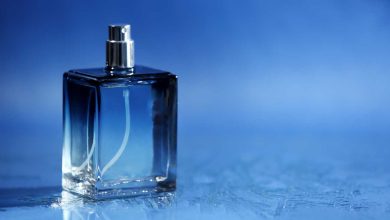How Does Winter Affect Your Chronic Skin Conditions?

As every season comes and goes, preparing your skin for winter will save you from scrambling for different ways to help your chapped and dried-out skin lips. Learning how the skin reacts to the cold weather will ensure you create a normal routine ahead of time and even prevent your skin from reacting negatively to winter.
Cold weather might take a toll on your body. However, most reliable dermatologists recommend using winter tips for chronic skin issues, mostly revolving around nutrition and hydration.
When the temperatures drop, the moisture content inside your skin will also decrease. This might result in different skin conditions, including:
1. Seborrheic Dermatitis
Like dandruff, seborrheic dermatitis may cause redness and burning scalp with flakes. However, seborrheic dermatitis may appear on your body.
The dryness of winter may worsen your condition, but ensure you stick to your treatment plan. Avoid also using hot water when taking a shower. Rather than that, use lukewarm water to ensure your scalp is not inflamed.
2. Dry Skin
Dry skin is very common during winter compared to warmer months. The change in temperature and humidity in winter may irritate your skin.
Dry skin may also affect most individuals during winter, and its severity might differ significantly. Different treatments may replenish moisture in your skin and relieve the symptoms associated with the condition.

3. Winter Rash
People living in places with seasonal weather changes might develop an itchy and dry rash during winter. Basically, winter rash is dehydrated skin.
Dry air, central heating, and cold may suck the oil and water from your skin. Certain medical conditions and other environmental factors may as well result in rashes.
4. Eczema
Winter air is hard on the skin and can dry it and trigger an eczema flare-up. If it happens you have been cooped up inside the winter weather, you can be surrounded by different indoor allergens, such as dust mites and pet dander.
If allergy is the trigger for this condition, be sure to control it. You can achieve this by keeping pets from your bedroom, washing blankets/sheets regularly, and putting dust mite-proof covers on pillows and mattresses.
5. Chilblains
Pernio or chilblains happens when small blood vessels in the skin get inflamed once it’s exposed to cold. Those blood vessels become itchy, red, and even swell. Patches normally appear on cheeks, fingers, ears, and toes.
Chilblains may also catch you off guard since you don’t have to freeze out so as to get them. They might start showing up when your skin is exposed to temperatures as high as 60 F.
6. Chapped Lips
Nothing can be worse than red, chapped, and cracked lips in the winter. Chapped lips are the biggest problem most people complain about in the winter. Your lips might have a thin layer of skin, and most part of your face will dry out because of low humidity, dry air, and wind.
Cracking and splitting may also happen in severe cases, which can be painful and will not heal easily. Among the common mistakes most people make is licking lips.
This may result in severe irritation. Instead of licking your lips, you can use a lip balm to heal and ease your chapped lips, adding extra hydration and moisture. Plus, most lip balms may also have healing medications, which can ease and cool pain.
7. Psoriasis
This is an autoimmune disease, which causes chronic skin problems. Basically, the epidermis gets rids of skins cells and creates new ones every month.
With psoriasis, the immune system will mistakenly see healthy skin cells as unhealthy. This means it signals the epidermis to grow abnormally.
However, winter-proofing psoriasis solutions can protect your skin during winter. Some of these solutions include moisturizing your skin, trying out acupuncture, and choosing the best cream.
8. Rosacea
It is projected that approximately 16 million individuals in the United States live with rosacea. While there is no known cause for this condition, it is characterized by blushed-look, stinging, and swelling, commonly located on the cheeks and face.
Exposure to cold and wind may result in rosacea being aggravated. According to the National Rosacea Society, wearing ski masks or scarves can protect your face from winter or cold wind.
9. Frostbite
Apart from the daily nuisance of dry skin, there are many winter skin problems. More exposure to freezing temperatures might result in frostbite. This causes permanent damage to the skin and its underlying tissue.
Like water that breaks glass containers, your body’s cells may die and burst when they are frozen. Because of that, it is important to take some precautions against frostbite, especially if you have plans of staying outside the house during winter.
Concluding Remarks!
Not every winter flake consists of snow. Cold weather, with low humidity, can wreak havoc on your skin, making it flaky and dry.
The health of your skin is important. Not just for appearance, but also because it performs a lot of important tasks.



